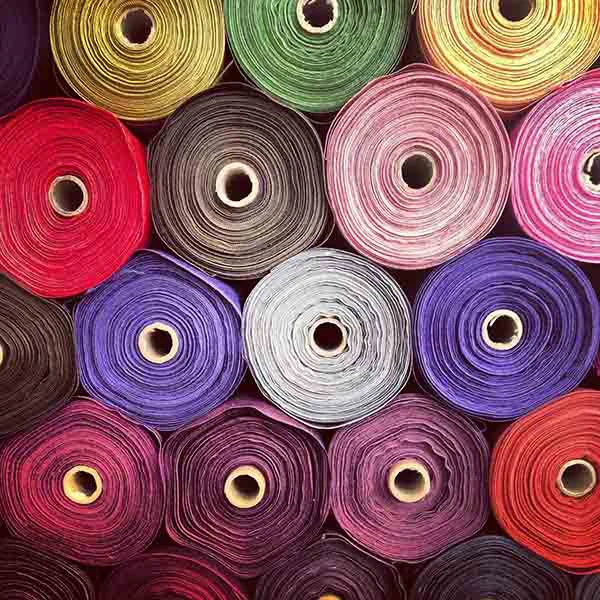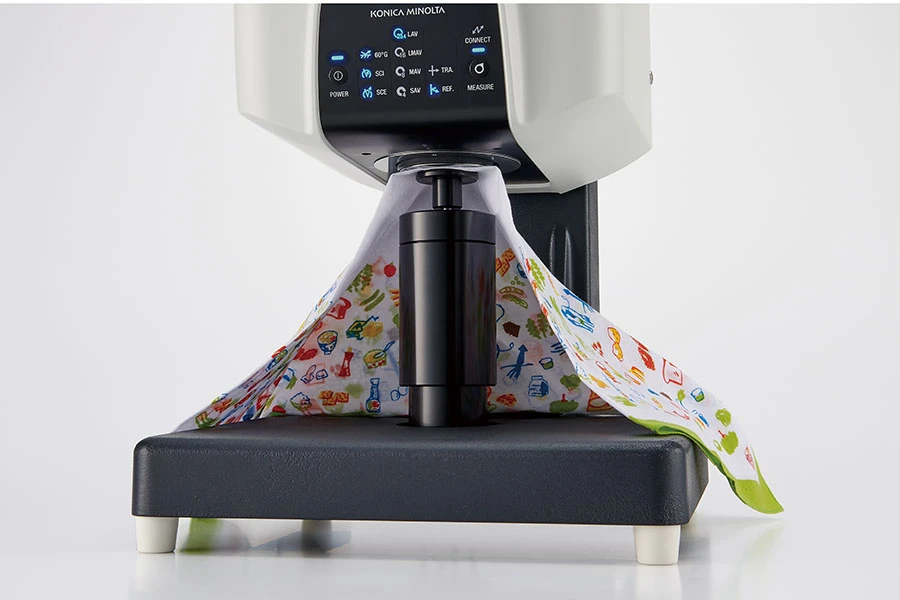How To Measure the Color of Textile?

Color is an important attribute of textile products. Visual checks are often the first step in evaluating the color accuracy of textile products at a basic level. However, this is insufficient as visual assessment is subjective and subtle color difference is difficult to discern with the naked human eye.
Color measuring instruments offer an ideal method of assessing the color accuracy color fastness of textiles objectively. It express color numerically in CIE LAB color space, allowing everyone within the supply chain to specify and communicate color with ease and precision.
Different forms of textile require different methods of measuring to obtain reliable color data.
Loose Fiber
Tie a bunch of loose fiber together for volume and thickness. Ensure the fibers sample is large enough to cover the instrument measuring port, and no gaps are between the fibers. Sample should be measured at 2 to 4 times (e.g., rotating 90 degrees each time) on several spots (e.g., 3 to 5 spots) to obtain an average color data. For better repeatability, it is recommended to use a large measuring area.
Yarn
Yarn can be winded into a skein or wrap around a card or tab before presenting it for measurement. The method to measure yarn is similar to how loose fibers are measured (e.g., no gaps, multiple times on different spots, large measuring area).
Fabric
If a fabric sample is not opaque, light can pass through and give unreliable color data. 2 to 4 folded layers are generally sufficient to achieve an opaque sample. But for those that are translucent or lightweight, folding and backing them with a white ceramic tile is recommended. Similarly, the measuring process of fabric sample involves measuring 2 to 4 times, with a large measuring area, on 3 to 5 different spots.
 Konica Minolta Spectrophotometer CM-36dGV offers all the necessary functionality to evaluate the color of the textile with ease. With a repeatability of σ∆E*ab < 0.02, accurate and consistent color data can be expected from all measurements. The excellent inter-instrument agreement of ΔE*ab< 0.12 ensures color data correlation between several CM-36dGV across the supply chain.
With the optional Wavelength Analysis & Adjustment (WAA) function, textile manufacturers can be assured that the CM-36dG and measurement data won’t be affected by the fluctuation of surrounding temperature. Together with SpectraMagic NX Pro Software, the CM-36dGV can also capture the effect of metamerism or optical brightener agents (OBA) with ease.
Konica Minolta Spectrophotometer CM-36dGV offers all the necessary functionality to evaluate the color of the textile with ease. With a repeatability of σ∆E*ab < 0.02, accurate and consistent color data can be expected from all measurements. The excellent inter-instrument agreement of ΔE*ab< 0.12 ensures color data correlation between several CM-36dGV across the supply chain.
With the optional Wavelength Analysis & Adjustment (WAA) function, textile manufacturers can be assured that the CM-36dG and measurement data won’t be affected by the fluctuation of surrounding temperature. Together with SpectraMagic NX Pro Software, the CM-36dGV can also capture the effect of metamerism or optical brightener agents (OBA) with ease.
Need assistance in measuring the color of your textile? Contact our color specialists for a free consultation and demonstration now.
